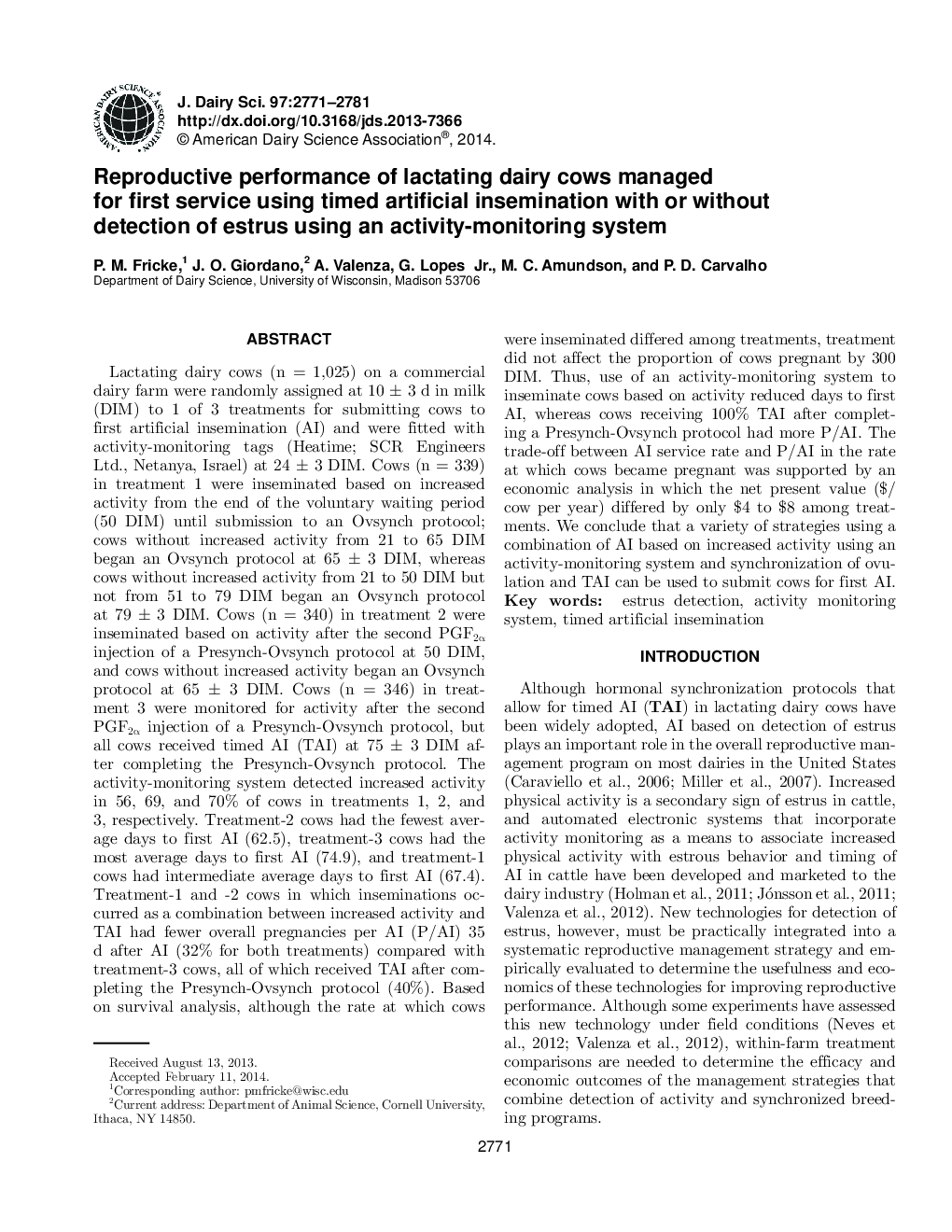| Article ID | Journal | Published Year | Pages | File Type |
|---|---|---|---|---|
| 10974415 | Journal of Dairy Science | 2014 | 11 Pages |
Abstract
Lactating dairy cows (n = 1,025) on a commercial dairy farm were randomly assigned at 10 ± 3 d in milk (DIM) to 1 of 3 treatments for submitting cows to first artificial insemination (AI) and were fitted with activity-monitoring tags (Heatime; SCR Engineers Ltd., Netanya, Israel) at 24 ± 3 DIM. Cows (n = 339) in treatment 1 were inseminated based on increased activity from the end of the voluntary waiting period (50 DIM) until submission to an Ovsynch protocol; cows without increased activity from 21 to 65 DIM began an Ovsynch protocol at 65 ± 3 DIM, whereas cows without increased activity from 21 to 50 DIM but not from 51 to 79 DIM began an Ovsynch protocol at 79 ± 3 DIM. Cows (n = 340) in treatment 2 were inseminated based on activity after the second PGF2α injection of a Presynch-Ovsynch protocol at 50 DIM, and cows without increased activity began an Ovsynch protocol at 65 ± 3 DIM. Cows (n = 346) in treatment 3 were monitored for activity after the second PGF2α injection of a Presynch-Ovsynch protocol, but all cows received timed AI (TAI) at 75 ± 3 DIM after completing the Presynch-Ovsynch protocol. The activity-monitoring system detected increased activity in 56, 69, and 70% of cows in treatments 1, 2, and 3, respectively. Treatment-2 cows had the fewest average days to first AI (62.5), treatment-3 cows had the most average days to first AI (74.9), and treatment-1 cows had intermediate average days to first AI (67.4). Treatment-1 and -2 cows in which inseminations occurred as a combination between increased activity and TAI had fewer overall pregnancies per AI (P/AI) 35 d after AI (32% for both treatments) compared with treatment-3 cows, all of which received TAI after completing the Presynch-Ovsynch protocol (40%). Based on survival analysis, although the rate at which cows were inseminated differed among treatments, treatment did not affect the proportion of cows pregnant by 300 DIM. Thus, use of an activity-monitoring system to inseminate cows based on activity reduced days to first AI, whereas cows receiving 100% TAI after completing a Presynch-Ovsynch protocol had more P/AI. The trade-off between AI service rate and P/AI in the rate at which cows became pregnant was supported by an economic analysis in which the net present value ($/cow per year) differed by only $4 to $8 among treatments. We conclude that a variety of strategies using a combination of AI based on increased activity using an activity-monitoring system and synchronization of ovulation and TAI can be used to submit cows for first AI.
Related Topics
Life Sciences
Agricultural and Biological Sciences
Animal Science and Zoology
Authors
P.M. Fricke, J.O. Giordano, A. Valenza, G. Jr., M.C. Amundson, P.D. Carvalho,
